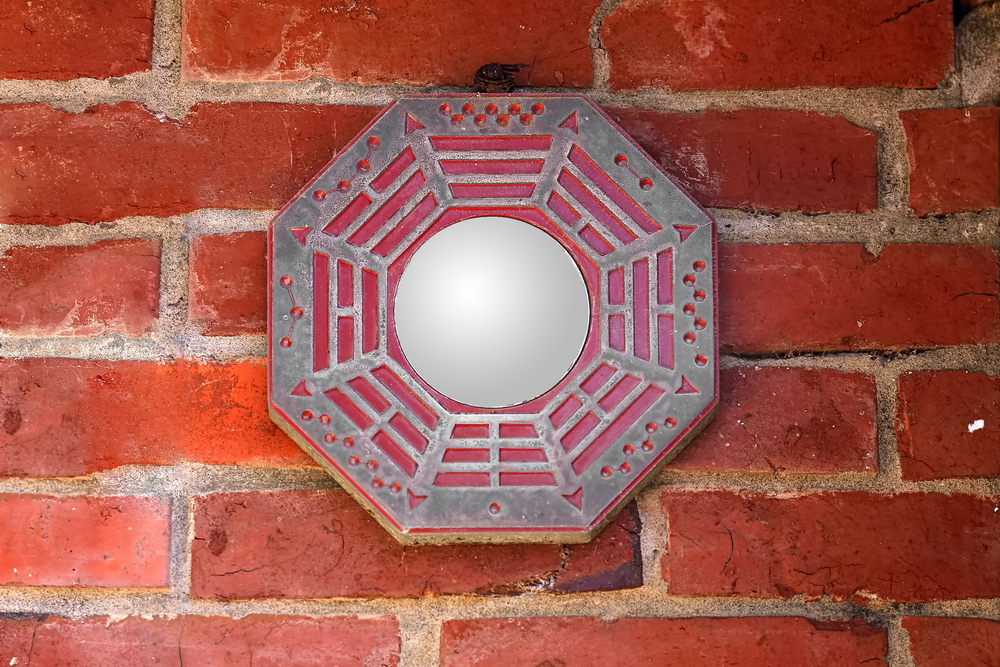
Mirrors have been around for thousands of years. The oldest man made versions date to around 6,000 B.C.E., constructed from polished black volcanic glass. Modern editions have been with us since their invention in 1835. Besides showing our reflections, mirrors also have scientific, industrial, and decorative uses. But in the Chinese art of feng shui, they take on a completely unique purpose.
How Mirror Is Like Water
Traditional Chinese thought defines qi as essential life energy moving through all of existence. It must flow smoothly, not rush in too quickly or stagnate. Many things can impact its movement, but mirrors are unique in one key way: Qi can bounce off their surfaces just like light.
Feng shui treats mirrors as if they’re water. This isn’t surprising, given that they both have reflective surfaces. But architect and feng shui expert Anjie Cho adds that mirrors embody water’s qualities, encouraging contemplation and the search for wisdom.
Depending on their application, mirrors can also improve or enhance energy focus within a space. With their reflective properties, mirrors are often used to make small adjustments to the flow of qi. Cho mentions that this practice is called xie zi fa, which translates as “method of minor additions.”
Negative Energy in Feng Shui
Qi comes in three different forms: positive, negative, and stagnant. Positive qi is uplifting, while stagnant qi is slow and sluggish. Negative qi can come from sharp angles or pointed objects — a corner or a tree branch, for instance. Feng shui practitioners call it “sha qi,” a type of harmful energy that attacks like poisoned arrows.
In another piece for The Spruce, Cho mentions that negative qi can also originate from building corners or sharp roof lines pointing at your home. These are particularly problematic if they’re aimed at your front door. Some associate negative qi with loss, so poison arrows may play a role in financial, social, relationship, and health problems.
Mirrors as Feng Shui Remedies
In feng shui, mirrors’ shapes and reflective properties can create unique effects. Cho explains that popular mirror styles in feng shui include flat, convex, and concave. Flat mirrors simply reflect, while convex mirrors provide a larger view with a wider angle. Concave mirrors shrink images and flip them vertically, which can be useful when dealing with negative qi. By diverting this “poison arrow” energy, concave mirrors can ward off its harmful effects.
Of course, not just any mirror will do. Cho emphasizes that mirrors used in feng shui must consist of single glass pieces to achieve the best effects. None of the glass should be broken, missing, clouded, or distorted. Mosaic mirrors are not ideal because they lack a unified surface.
A Special Kind of Mirror
While standard mirrors are considered useful in feng shui, one special kind of mirror has made its way from classical usage into modern practice. You may remember that the bagua is an octagon-shaped energy map. It’s superimposed over a physical space to show where certain types of energies lie — fire, earth, metal, water, and wood. All the bagua mirror does is combine this eight-sided map with a simple mirror at its center.
Cho describes the bagua mirror as a protective amulet. Its primary purpose is averting negative qi, but it’s only used on the outside of a building. Moreover, it requires careful placement to achieve its desired effects. Most feng shui experts recommend that only qualified practitioners use bagua mirrors. With incorrect placement, they could push away positive energies or attract negative ones.
A Case of Spiritual Reflection
Mirrors reflect images we can see. Yet feng shui practitioners believe they impact how unseen energies move through our homes. Like any other tool, they must be used wisely to achieve ideal outcomes.


